Boardroom dives deep into the origin and retro return of Kobe Bryant’s Audi-inspired “Crazy 1” signature sneaker from The Three Stripes.
Earlier this week, images leaked of the upcoming Adidas Crazy 1 Retro release. The sleek, outer-space sneaker once known simply as “The Kobe” dates back to the turn of the millennium in origin, renamed with the tongue-in-cheek ‘Crazy’ moniker, years after Bryant backed out of his Three Stripes sneaker deal to pursue footwear free agency and eventually sign with Nike.
Though The Kobe — or “Crazy 1” as it’s officially known on line sheets — has come back before in 2006 and again in the mid-2010s, the tone around this re-release is much different. In 2022, Kobe Bryant is no longer with us physically, making the memories and emotions tied to his various signature sneakers that much more impactful.
Such is the story of Adidas’ The Kobe: a shoe so defiantly designed that only triumph, tragedy, and 22 years of aesthetic evolution could prepare the market for its reintroduction.
From Sub to Standout
Before Kobe Bryant had an NBA start to his name, he already had an Adidas deal worth millions. Appearing in nationally televised advertisements before he could legally buy a stiff drink, the teenage talent had arrived as a force in sportswear long before the Lakers considered him one of their five best players.
As an 18-year-old rookie, Kobe carried Adidas into a new era of hoops, balling out in the Adidas EQT Elevation en route to a Dunk Contest title before air-balling out of the NBA Playoffs in Utah. Undeterred, Bryant doubled down on his gym time while Adidas went twice as hard on the partnership. By his second season, Kobe had his own sneaker in the Adidas KB8 and an All-Star start to his resume. In the years to follow, the Lakers would name him a starter while Adidas would place his full first name on a shoe.

That shoe was the Adidas The Kobe – a sculpture of a sneaker inspired by the Audi TT roadster. Designed by Eirik Lund Nielsen in collaboration with the car company, the avant-garde rebrand for Bryant was led by the late, great Peter Moore.
“I saw a merger between sport, basketball, style, and fashion,” Moore recalled in Roland Lazenby’s Bryant biography, Showboat. “I even hired the designers and the models that worked on the concept for Audi to design his shoe.”
As history tells it, a shoe typically takes 18 months to go from sketch to market. Thus, over the course of the 1999-00 NBA Season, the team at Adidas showed the then 21-year-old talent prototypes of what would be The Kobe as he embarked on his first All-NBA campaign.
“He lit up,” Moore said of showing Kobe the first sample. “He got it, and he saw it was different. It just fit with the style of his play.”
Taking a chance, Bryant broke out his new namesake shoe in the second round of the 2000 NBA Playoffs before the world knew what they were or what was about to take place. Playing against Penny Hardaway and Jason Kidd — both All-NBA status stars and signature athletes in their own right — Bryant put both Nike endorsers on ice skates, going 1-4 flat in Staples for the game-winner in Game 2.
In that series, Kobe averaged 21 points a night in his new “Moon Boot” basketball shoes. While Round 2 of the 2000 NBA Playoffs proved the first time the world saw “The Kobe” on-court, it wouldn’t be the last time said shoe touched hallowed hardwood.
Prepare for Liftoff
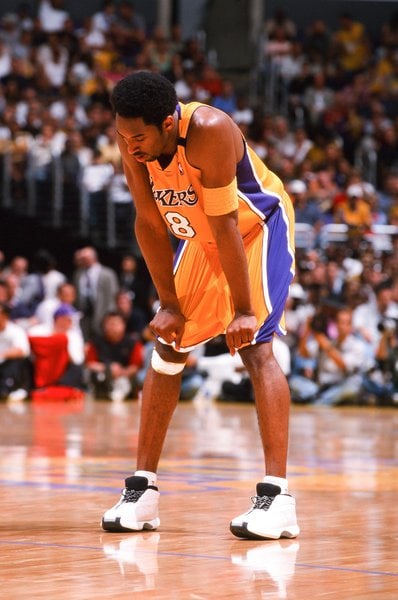
Fortunately for fans of Kobe and the execs at Adidas, Round 2 of the 2000 NBA Playoffs was only a preview of the winning ways to come from Bryant and his superstar teammate, Shaquille O’Neal.
Months before The Kobe would be ready for retail, Kobe himself became a member of Laker lore by helping Los Angeles secure its first NBA Championship since the days of Magic and Kareem. Over the course of a six-game series against Larry Bird’s Indiana Pacers, Kobe rotated “Stormtrooper” and black-based colorways of his Audi-inspired sneaker all June. When the season had wrapped, Kobe had new shoes on his feet — and new jewelry on his hand.
Fresh off his first championship ring, Kobe spent the summer of 2000 preparing for a return to the Finals and readying his first rap album. Meanwhile, over at Adidas, a new hire who started in streetwear was getting his feet wet by selling The Kobe into stores across the country.
Jon Wexler, the man that would bring Kanye West from Nike to Adidas a decade later, had just started working for the brand’s basketball category after years of unanswered phone calls. In both Bryant and Tracy McGrady, Wex saw crossover appeal from court to culture. However, to bring The Kobe to market — a shoe fans had seen on TV for months now — Adidas was decided about not overpopulating pairs and making the distinct design capture a certain sought-after, aspirational esteem.
“That really taught me about how to think about demand creation versus order taking,” Wex told Boardroom. “With sneakers, you have to build a really thoughtful rollout strategy and business.”
Indeed, the process of bringing The Kobe to market was utterly calcuated. In November 2000, The Kobe released at retail for $125 in “Stormtrooper” white, followed by the all-black playoff pair in December. Everything about the shoe – from its allocations to its advertising – was intended to be fashion-forward and aspirational in its coolness.
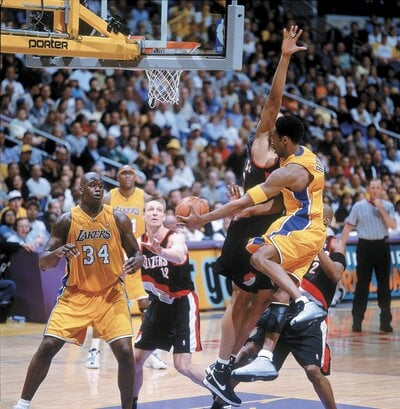
This wasn’t lost on Adidas, nor Kobe himself. When asked about the shoe by Russ Bengtson for a 2000 SLAM Kicks cover story, Kobe’s impression of the shoe matched that of Moore’s intention.
“Something different,” Bryant said. “We kinda wanted to go with a sneaker that didn’t have the same look as any other sneaker on the shelf.”
This was all by design in every sense of the term. Much like Peter Moore had helped Michael Jordan become a hero at Nike through audacious advertising and brash color blocking, he later looked to shift culture through the Italian-raised Bryant who had an immense IQ and confidence both on and off the court. Such was portrayed through 2000’s The Kobe.
“It was all about style, not about basketball at all,” Moore said. “My bet was that kids were changing. They were going to start buying more style than basketball.”
For the entire 2000-01 NBA Season, Bryant defended his first NBA title in The Kobe with “Ice Blue,” “Sunshine,” “Metallic Silver,” and “Mesh” makeups released at retail. Nearby basketball prodigies like Matt Barnes, Earl Watson, and Jason Kapono played in pairs at UCLA, with Kobe continuing to play at an All-NBA level at Staples.
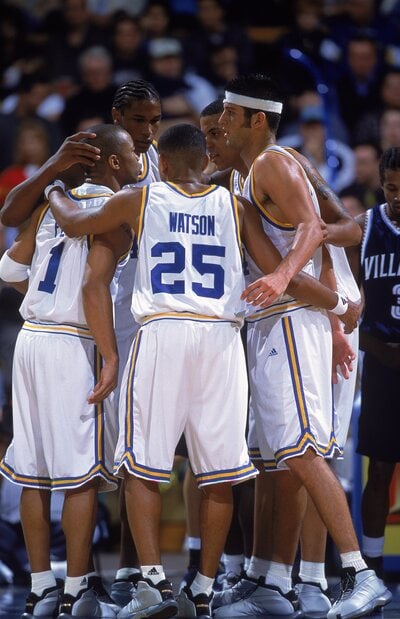
In ads, Bryant rode around Los Angeles on a Ducati with The Kobe on his feet. This was not ‘Like Mike,’ but rather very much an aesthetic that he could own.
On other TV spots, Kobe would be seen lounging around his modern mansion in the same shoe. The play proved it all as Kobe was defining himself as the ultimate winner, taking home his second-straight Championship in the Audi-inspired signature.
For the following season, Adidas doubled down once again on Kobe — and also Audi — releasing The Kobe Two.
Dubbed “the toaster,” the sequel sneaker was even odder than its predecessor and even more polarizing to the market. While Moore and Adidas looked to lean all the way into Bryant’s international upbringing and masterful mind, the artsiness of The Kobe Two was no match for the toughness of Allen Iverson’s Reebok range. Despite defeating The Answer the previous postseason, popularity for the little guy was unmatched.
To many, Kobe’s creativity made him the uncool foil rather than the forward-thinking fan favorite.
Over the course of Kobe’s third straight Finals run, tension between Adidas and the athlete began to mount. The marketing angle behind Bryant was too left for the masses, with his new shoe not landing right. Because of this and additional drama behind the scenes, Bryant returned to The Kobe for the 2002 NBA Finals. Adidas reproduced PE pairs for Bryant in his size that spring.
Shortly after that summer, Kobe ended his Adidas deal.
Since then, the brand and the athlete have existed at odds. Bryant went on to become a titan in the industry at Nike, while Adidas re-released his previous pairs under the ‘Crazy’ moniker. In a matter of years, it went from all good to all bad faster than the motorcycles Kobe once rode on in ads.
While time may not heal all wounds, it does provide a new perception regarding old events. After 22 years, an untimely tragedy, and creativity now driving a maturing market, The Kobe is finally set to ride again.
Back in Rotation
When Sonny Vaccaro invited a then-unknown Kobe Bryant to Adidas ABCD Camp as a high school underclassman, it started a sportswear fairytale that even Hollywood couldn’t write.
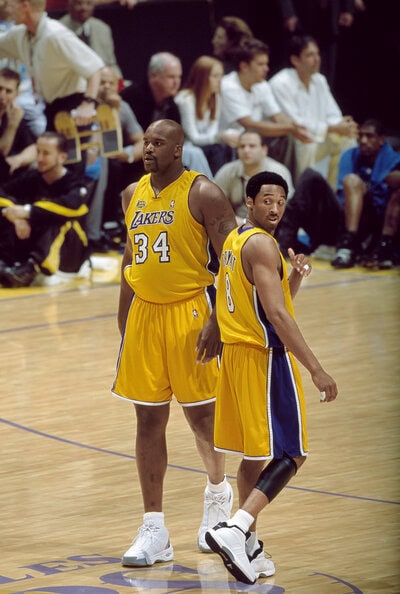
At that time, everything went as or better than planned — until it didn’t. As the story goes, Kobe wound up in the major market of Los Angeles and Adidas was there for his entire ascent. By the time Bryant had three rings and multiple models to his name, he cut ties with The Three Stripes, and went on to lead a new chapter of innovation at Nike.
Since the passing of Kobe Bryant in January 2020, demand for anything related to the icon has been at fever-pitch, with footwear perhaps proving the most compelling consumer good. The tragic tale took another twist in April 2021, when the Kobe Bryant estate decided against renewing its Nike deal. Not only did this upset fans, but it sent a shockwave through the entire industry. That summer, discussions between Vanessa Bryant and all bidders in the sneaker and apparel space was seemingly open, and things were especially ripe given Kobe’s enormous worldwide fandom and celebrated career that saw him play in everything from Jordan Brand to AND1 to Reebok.
At the origin of it all, however, was always Adidas, the first brand to bet on the man who’d become the Mamba.
A friend to the family and likewise an Adidas athlete, Candace Parker proved one of the few who could bridge the distance between the Bryants and Kobe’s original sponsor.
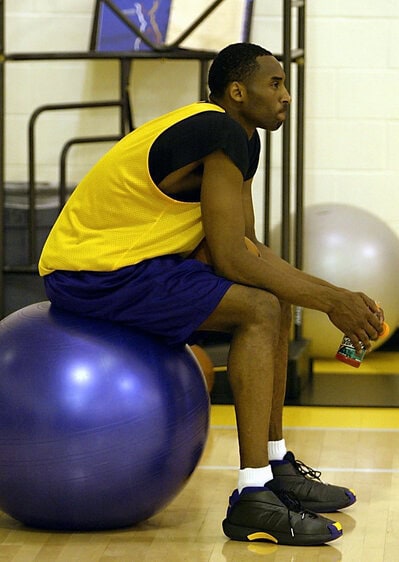
“The Kobes were my first AAU shoe,” Parker told Nick DePaula. “I have a whole Kobe collection in my closet. I think every time you wear it, you kind of feel it. [Kobe] always talked about making a contract to yourself. Signing a contract for yourself and your commitment to what you’re going to do. When you wear his shoes, it’s like a little bit of him is rubbing off on you.”
In the time following Kobe’s unfortunate passing and during what would be Bryant’s second stint of footwear free agency, Parker was a profound supporter of his sneaker history and his widowed wife, Vanessa. Parker could be seen popping up at events and games in archival pairs of the Adidas Crazy 1 as well as Pro Model tributes to the Laker legend.
In the latter months of 2021, reports began to surface that Adidas models from the Kobe archive, including the The Kobe itself, would return in 2022 to the delight of Day 1 fans and new followers.
“I can’t wait,” Parker said. “I think the colorways are great. I love an old shoe. It’s going to be hard for them to bring out more shoes that I don’t have though, because I have all of the Kobes.”
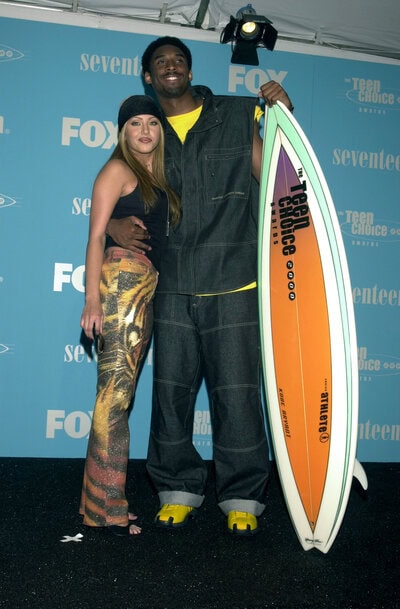
Originally, the “Sunshine” Crazy 1 was intended to roll out in Spring 2022, designed to be the sneaker of choice for the Adidas sponsored McDonald’s All-American Game in Parker’s hometown of Chicago. However, that launch was delayed due to factory issues that still stem from the pandemic. Following a lull in information, Hypebeast now reports that the original “Sunshine,” “Stormtrooper,” and “Metallic Silver” styles will return to retail later this year at a price point of $140.
That’s not the full extent of this year’s good news for Kobe Bryant’s footwear superfans, however. In March, Vanessa Bryant announced that the estate is back with Nike. While this will likely leave archival storytelling or family co-sign out of the Adidas rollouts, it still bodes well for the legion of Kobe supporters who can’t wait to have a shoe tied to the legend on their feet.
Additionally, sources close to Boardroom signal that more makeups of the Crazy 1 and other retro releases inspired by Bryant are on the way from Adidas, which could even include the never-before-retroed Top Ten 2010 that Kobe wore throughout his rookie season.
Though COVID complications have shifted launch dates, pairs will likely release in the coming months, with more to follow. For fans of the Black Mamba, it is more than likely that Adidas Kobes will arrive at retail sooner than that of newer Protro pairs tied to the renewed Nike partnership.
Always intended to be fashion-forward and style-centric, it remains to be seen just how much The Kobe is embraced in current retro life, given the greater fanfare guaranteed to surround it now compared to its 2000 introduction. In the world of re-released basketball shoes, models once considered futuristic like the Nike Air Foamposite One and Air Jordan 11 prove even more popular decades after they debuted.
Much of that is marketing and folklore; the rest of it is fashion and culture catching up.
In 2022, over two decades since The Kobe debuted and exactly 20 years after Bryant hung up his namesake Three Stripes shoe after securing his third ring, the Crazy 1 retro has a chance to provoke play and drive culture in the manner Peter Moore always intended. It was a risky bet in 2000, but it might be a hit now.